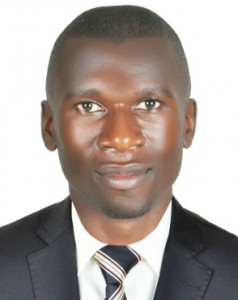A critique of the concepts of resilience and sustainability as commonly used is presented. The discourse of ‘increasing resilience’ is simply not likely to prevent crises recurrences in the long-term as is claimed, because it does not carefully analyze the root causes of the development problems at hand. Ideas are explored of how resilience can be made to address equity, equality, fairness and human rights. It is further argued that the concept of sustainability has become too abstract since environmental problems cannot be analyzed independently from their effect on human rights and on people’s livelihoods. The root of the problem is that, to be sustainable, development actually is to be about processes of popular enrichment, empowerment and participation that our technocratic project-oriented view has simply failed to accommodate. Provided are some blueprints addressing the needed personal and institutional changes that will support a new vision of sustainability

By Claudio Schuftan*
Ho Chi Minh City cschuftan@phmovement.org
Yes, Resilience and Sustainability Are Too Narrowly Defined
Resilience
Most of the proposed definitions have included the idea of a healthy, adaptive, or integrated positive functioning over the passage of time in the aftermath of adversity.
(Steven M. Southwick et al, “Resilience definitions, theory, and challenges: interdisciplinary perspectives”, Eur. J. of Psychotraumatology 4 (2014): 25338. http://dx.doi.org/10.3402/ejpt.v5.25338)
In September 2008, the former UN Special Rapporteur on Food Olivier de Schutter used the concept of resilience confidently as a condition for coping with uncertainty and thus guaranteeing access to food for all when prices of food increase. He called on building longer-term resilience and contributing to global food and nutrition security, by expanding social protection systems; sustaining the growth of smallholder farmer food production; improving international food markets; and developing an international consensus on agro-fuels.
Olivier De Schutter, “Building resilience: a human rights framework for world food and nutrition security” (paper presented at the UN General Assembly, New York, September 8, 2008). Document A/HRC/9/23
In April 2016, seven years later, on the occasion of the Vancouver Health Systems Research Conference, things had changed. A group of colleagues presented a short and well justified critique of the concept of resilience. In general, their points were the following:
- Resilience has become an emerging ‘hegemonic’ discourse in the field of development policy.
- Resilience has been increasingly applied to refer to the need for distressed development conditions to ‘bounce back’ from shocks.
- The gratuitous assumption is being made that such conditions were ‘there’ and were good in the first place, or at the very least, that with a concerted effort they can get back there.
- What a resilient system to us thus addresses is a form of technocratic reductionism since resilience strategies and solutions are often divorced from meaningful assessment of the political economy and power dynamics that produced the development crises we face in the first place.
- The communities seeking to regain access to chronically deficient social services delivery systems are more likely to have low levels of education, to have weak citizen engagement and to experience severe class discrimination.
- Much of the technocratic discussion around ‘building resilience’ appears to bypass these issues, often focusing on tweaking inputs to the development process (frequently emphasizing self-reliance and behavioral changes). This technocratic approach to building resilience is at odds with the complex reality of the development process in each country.
- Building resilience rarely seems to involve a direct examination of, or challenge to, the structural conditions that contribute to the overarching social services dysfunctionalities based on historical colonial legacies and current trade and aid structures.
- The rise of the increasingly hegemonic resilience discourse has further effectively enabled duty bearers globally to replace the conversation about systemic failures at multiple levels seen from a long-term vision with an action-oriented discourse that is based on much shorter time frames and ignores myriad structural determinants.
The authors expressed the concern –that I fully share– that the discourse of ‘increasing resilience’ will lead to global development policy reforms that will be fueled by the perceived immediacy of a problem instead of by a careful analysis of the root causes and the strategies likely to prevent crises recurrences in the long-term.
Bottom line, a conscious discussion is needed to reframe what we mean when we use the term ‘resilience’. “Resilience only has value, as long as it is not divorced from the material changes that need to occur to support them and the requirement for a more balanced relation among national states (trade, flow of resources, and others). The use of the term is to rather build on the already reached consensus around the social determination of development outcomes, the use of the human rights framework and people-centered development. This means resilience must be situated within its relation with equity, equality, fairness and human rights.”[1]
(Stephanie Topp, Walter Flores et al, “Critiquing the Concept of Resilience in Health Systems”, Health Systems Global Blog, April 12, 2016.
http://www.healthsystemsglobal.org/blog/110/Critiquing-the-Concept-of-Resilience-in-Health-Systems.html)
Sustainability [2]
The 1987 Brundtland Report defined sustainable development as that which satisfies the needs of the present without compromising the needs of future generations. To many, this definition was too abstract since environmental problems cannot be analyzed independently from their effect on human rights, on human employment and on livelihoods.
The root of the problem is that, to be sustainable, development actually is to be about processes of popular enrichment, empowerment and participation that our technocratic project-oriented view has simply failed to accommodate.
Conversely, what we see among the most prominent newer development theories are all sorts of ‘multidisciplinary approaches’ to solve the problems of development.[3] There is nothing terribly wrong with this concept, only that it gratuitously assumes that looking at the problems at hand from a ‘wider’, ‘pluri-disciplinary’ perspective is going to automatically lead us to the better, more rational and equitable solutions… Just by putting together disciplines and putting together brains ‘sown’ differently –without considering where these individuals are coming from ethically, ideologically and politically– has not, is not and will not, by itself, make a significant difference in the outcome and in the options chosen. (For sure so if we do not, additionally, actively incorporate claim holders in the decision-making process).
As far as I am concerned, this has led us to an ice-age in our thinking on sustainability –on how, for instance, preventable ill-health and malnutrition are deeply linked to an overall unsustainable development model. Now, we need to think what ought to follow during the encouraging current thaw.
It is thus necessary to reformulate and revise the concept since, in the years since the Brundtland Report, it has been variously used as a ‘joker’ in all discussions about development and the environment. Taken to an extreme, some still argue that the privatization and commodification of the commons is the ideal roadmap to guarantee sustainability. This, notwithstanding that there is ample evidence that such an approach is eminently fallacious. For instance, Olivier De Schutter showed during UN hearings that ocean grabbing and overfishing had become a global phenomenon as deplorable as the exploits of colonialism. Moreover, in the name of sustainability, the right to work of millions of artisanal fisherfolks are actively being violated.
Much of what is done in the name of sustainability is not to be seen as a series of isolated cases the world over. Actually, Capitalism’s expansion does not stop seeking wealth accumulation by grabbing land (agroindustry and corporate extractivism) and water resources using ‘legal means’ –and doing so in the name of sustainability. Unfortunately also many international environmental NGOs have become part of this trend making this fallacy less visible in terms of both its human and environmental costs.
It is clear that as guardians-of-the-environment-claim-holders we have to go back to basics and put the needs of the future generations upfront and demand long-term policies that stop Capitalism’s unacceptable, insatiable and non-democratic predation of the environment, its human costs included. The political class that defends and administers the neoliberal status-quo needs to be brought to the negotiating table in a level playing field with claim holders’ representatives as the only way to guarantee structural changes in our dealing with the environment and with all aspects of human dignity.
What a crackdown on a narrow application of the sustainability concept would mean for activists
Not only do we need to come up with conceptual breakthroughs, but we also need to provide blueprints for the needed personal and institutional changes that will support the new vision and its arrangements.
At the risk of sounding panfletary, I think these elements could begin making our work yield more potentially sustainable and equitable outcomes. I can think of no other format than presenting the major (mostly normative) points in the form of bullets (in no real particular order here):
- We need to de-professionalize our work.
- This will mean seeking, re-valuing and incorporating popular knowledge and know-how into planned actions.
- In the process, Third World local public interest civil society organizations have to take a more visible lead (even at the cost of making some possible mistakes).
- All relevant knowledge has to be shared with the claim holders openly and upfront for them to fully participate in the decision-making process from the very start.
- We need to move away from the project-oriented approach and move to long-term processes of popular enrichment and empowerment (using the consciousness raising of Paulo Freire).
- Needed expertise now has to be drawn not from academicians, not even from professional practitioners, but much more from the ‘everyday sufferers of the effects of the prevalent inequitable system’.
- Claim holders are to define what changes we will be looking for and let these guide the drawing of action plans.
- Action plans are thus to be negotiated and finalized in the field, not in our offices.
- As a matter of urgency, development and human rights education has to be carried out at a quite massive scale, carried out from the claim holders’ perspective with their choice of contents and priorities.
- All this means we have to shed many of our biased values and be more open to the claim holders’ values.
- Our analyses need to incorporate more the underlying structural causes of maldevelopment so as to see them as part of the ‘big picture’ (including those changes brought about by globalization).
- Such analyses will force us to tackle not only the multidisciplinary aspects, but the complex social and political issues preventing people from improving their own livelihoods (mostly related to control processes in society).
- We will have to confront face-on and expose the forces that oppose greater equity and equality so as to neutralize them (from the local level to the international arena).
- This means that we will have to adopt a dialectical approach as a more effective means to lead us to the needed systemic changes at the base of the major contradictions shaping the present situation.
- A conceptual framework of the causes of ill-health and malnutrition seen as outcomes –like the one UNICEF uses– is a needed intermediary step to assess and analyze the causes of maldevelopment at different levels and to come up with converging concomitant (necessary and sufficient) actions at the different causal levels.
- We will have to intensify our efforts at using the internet to build networks of like-minded colleagues that can consolidate a strong worldwide solidarity movement.
- We will have to become more active and vocal open critics of the type of (often tinkering) bilateral and multilateral aid that is perpetuating old non-empowering/non-equitable/non-sustainable approaches.
- We will have to actively help forcing institutional changes in bilateral and multilateral aid agencies (the UN and EU system included) that make them more democratic, economically independent and transparent.
- We will have to embark on a significant overhaul of the curricula of young development professionals that will prepare a new generation of more sustainable development-oriented professionals.
All the above –being desperately incomplete and a bit caricaturesque– sounds quite grandiose (and even romantic) and is packed with heavy-sounding, politically-charged action verbs. These action verbs probably define me (and many other) as a Gramscian ‘organic intellectual’. But what is here proposed should indeed help move the process from Gramsci’s orthodoxy to orthopraxis; otherwise, we might as well forget it.
But the processes that can lead to sustainability, equity, equality and human rights can (and should) start with small direct actions that we can help bring about more easily. Actions at grassroots level can take many forms, but should always reach a point in the discussion where who is losing and who is winning (and why) is thoroughly analyzed. At higher levels, most of us have more experience on how to start discussions leading to change. We just have to commit ourselves in a more militant way to get and/or keep the process going and, above all, challenge the status-quo that gives the impression that nobody cares.
Examples where some of the elements listed above have worked do exist. Some of them have become cliches (Kerala, Sri Lanka, Cuba, Iringa, Jamkhed and so many others). They all have in common bottom-centered, gender-sensitive, empowering approaches and a political choice to tackle the underlying deep roots of poverty, injustice and ignorance. Many organizations have championed causes such as the one proposed here (mentioning some would do injustice to the others), but evidently the effort has not been enough to the tenor needed to achieve global impact.
Note that the route suggested by this (clearly not) new vision requires we break with the old development paradigm; and this means stepping on many vested interests’ toes.
Yes, this will mean changing the terms of the discussion, because a vision is not much good if it simply stays in the air as something devoutly to be desired; a vision of that sort is a mirage: it recedes as you approach it. To be of use, the vision has to suggest a route, and this requires that it takes into account a lot of unpleasant realities.
But the role of an avant-garde is to cause fermentation. We cannot fall in the trap of believing someone else is going to take care of these things for us; we have to get active. A strategic overhaul of our actions requires nothing less than a crisis in our thinking and if by now there is no such a crisis in the horizon, we have to perhaps create one.
To do so, we see that old Marx was right. The political left must necessarily become international and solidary. What is happening everywhere is, not surprisingly, happening under the same legal and analytical frameworks Capitalism has set up. Problems are compartmentalized to hide its common determinants.[4] The time has come to work towards the definite unity of the progressive, environmentally conscious forces. With today’s reach of the social media it can be done. More than enough reasons justify this.
(Leonor Quinteros Ochoa, “Ocean grabbing o la depredacion internacional de los recursos pesqueros”, Politika Blog, June 1,2017 https://www.alainet.org/es/articulo/185865)
We are in for exciting new times. We need all the courage we can muster. Wouldn’t you rather become a protagonist than a bystander?
—————————————————
*Short Bio
Claudio Schuftan has worked extensively at global level (especially in Africa and Asia) in fields such as Public Health including, Strengthening Management of Health Systems and Health Policy Formulation, Public Health Nutrition, Primary Health Care; Maternal and Child Health Care, Health Management Information Systems, Human Resources for Health, Health Project Design, Health in SWAPs, District Health Management, Health and Human Rights Capacity Building, Community Health, Health Promotion, Health governance, Health Sector Reform and Gender Issues. Dr Schuftan has significant monitoring and evaluation experience in these fields. Apart from sector and joint evaluations for various donors,he has monitored EU projects mainly in the fields of health and nutrition especially since the establishment of the ROM initiative in 2001.
Dr. Schuftan has worked on the drafting of national plans of action in Cameroon, Kenya and Vietnam and has carried out in-depth situation analyses including access to health and right to health issues. He has prepared health investment plans and facilitated numerous training workshops. He has also written numerous training manuals. As senior adviser in the MOHs in Nairobi and in Hanoi he was in charge of operational planning at both central and local levels and contributed to SWAP-related work in one province in Vietnam. The same was done in Bangladesh. He has closely worked with concerned government agencies including public finance institutions and human rights committees.
By training, Dr Schuftan is a Medical Doctor and Pediatrician with a degree of the Universidad de Chile in Santiago and holds a post-graduate diploma in Food and Nutrition Planning from the Massachusetts Institute of Technology (MIT) in the US. He is a US, Chilean and German national and resides in Vietnam since 1995 (first Hanoi and then in Ho Chi Min City since 2003). He is the author of over 85 scholarly papers published in refereed journals.
LINKS
[1] Powerful international agencies under the influence of powerful nations promote programs that barely deal with human rights minima –if at all. These powers get away with bypassing the human rights commitments they do not like to recognize that they have made. They want to limit rights to the bare minima thus leaving aside all obligations to respect, protect and fulfill chronically violated rights that are at the base of ‘the lack of resilience’ as the authors so rightly point out. Governments depend on laying claim to being ‘rational and apolitical’ –in short, espousing the ‘ideology of the extreme center’. The space for Do Gooders belongs to the era of charity; we are now in the era of human rights. (The road to hell is paved with good intentions).
[2] Already in 2009, I had written two papers critiquing the sustainability concept. See Schuftan, C. http://claudioschuftan.com/37-a-the-emerging-sustainable-development-paradigm-a-global-forum-on-the-cutting-edge-of-progressive-thinking/ and http://claudioschuftan.com/37-b-towards-operationalizing-a-sustainable-development-beyond-ethical-pronouncements-the-role-of-civil-society-and-networking/
[3] Unfortunately, difficult problems have the power of leading us to focus on their more manageable components thus totally avoiding the more complex, underlying and basic, structural questions. This is known as ‘the exclusion fallacy’ in which what we choose not to discuss is assumed to have no bearing on the issue. (Mc Dermott, World Bank, 1989)
[4] To make sense of current world problems, we too often fall back on a ‘shish-kebab mentality’. This much easier and convenient approach looks at the various problems affecting the world as if they were all separate events (morsels) skewed together by tragedy or destiny. So we set out to tackle the morsels…when the problem is in the skewer.








